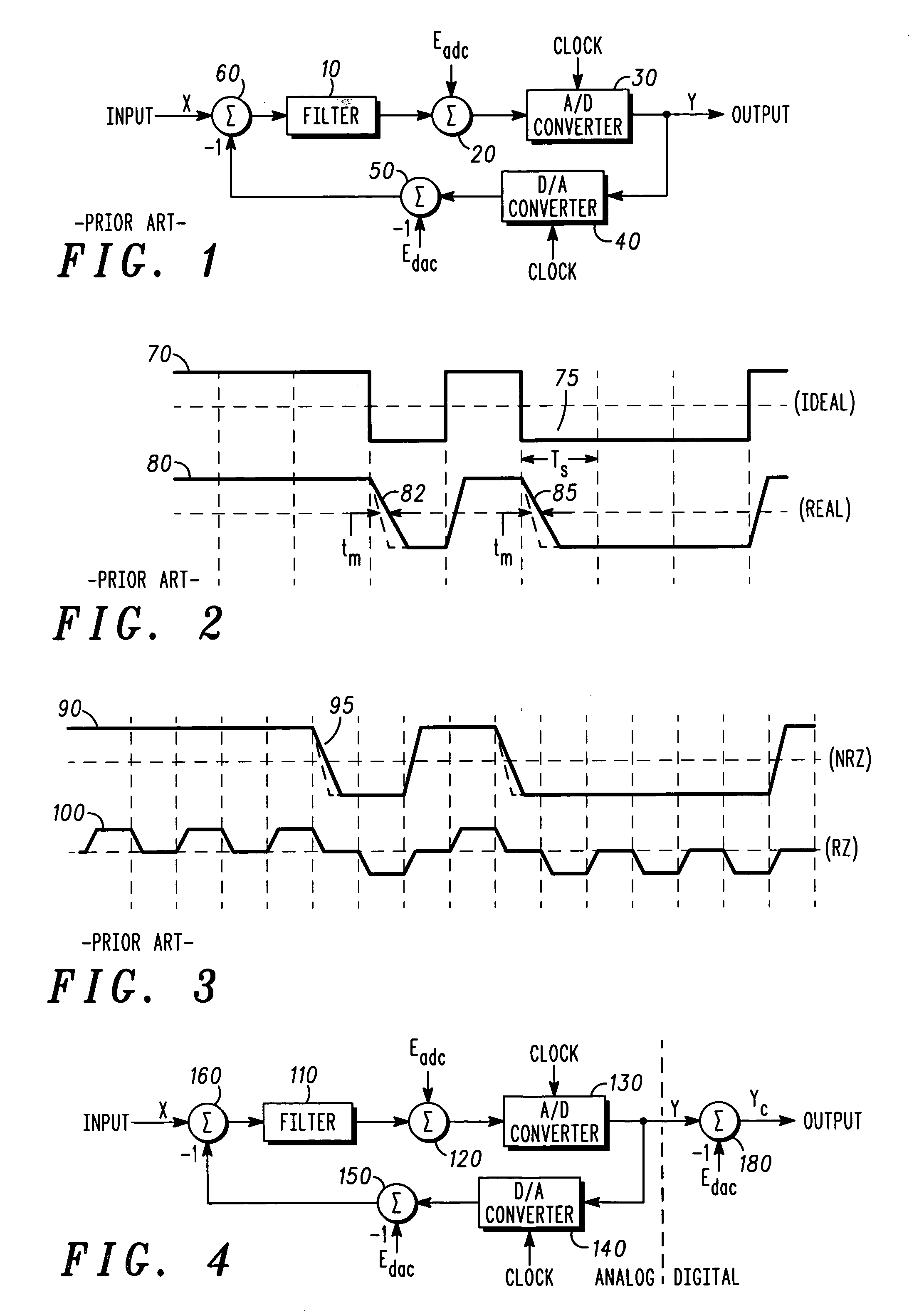Converter, circuit and method for compensation of non-idealities in continuous time sigma delta converters
a converter and non-ideal technology, applied in the field of analogtodigital and digitaltoanalog converters, can solve the problems of multi-bit feedback dac suffering from non-linearity errors, power consumption will dramatically increase, and -idealities severely limit their maximum achievable dynamic rang
- Summary
- Abstract
- Description
- Claims
- Application Information
AI Technical Summary
Benefits of technology
Problems solved by technology
Method used
Image
Examples
Embodiment Construction
)
[0043] As can be seen from equation 1 above, feedback DAC related error Edac is not noise-shaped and is transmitted in the same path as the input signal. If the same error signal can be reconstructed in the digital domain, it is possible to compensate for it by simply subtracting it from the output digital signal. The proposed method assumes that the error can be reconstructed in the digital domain using simple digital circuitry.
[0044] The principle is as follows: First, the error is reconstructed using digital circuitry that reproduces with a high degree of fidelity the analogue error Edac. Second, this reconstructed digital error is subtracted from the digital PDM output signal before it passes through the decimation filter.
[0045] Referring now to FIG. 4, there is shown a circuit substantially similar to that of FIG. 1, having a loop filter 110 of function H, an ADC 130 and a DAC 140, a summation block 160 and error components 120 and 150. However, the circuit of FIG. 4 also in...
PUM
 Login to View More
Login to View More Abstract
Description
Claims
Application Information
 Login to View More
Login to View More - R&D
- Intellectual Property
- Life Sciences
- Materials
- Tech Scout
- Unparalleled Data Quality
- Higher Quality Content
- 60% Fewer Hallucinations
Browse by: Latest US Patents, China's latest patents, Technical Efficacy Thesaurus, Application Domain, Technology Topic, Popular Technical Reports.
© 2025 PatSnap. All rights reserved.Legal|Privacy policy|Modern Slavery Act Transparency Statement|Sitemap|About US| Contact US: help@patsnap.com



